The Thompson or ‘Tommy’ gun has to be one of the most iconic submachine guns ever made and instantly recognisable. Even the term ‘submachine gun’ (SMG) was originally intended to describe the earliest Thompsons and has stuck as a generic term for machine guns that fire pistol rather than rifle calibre ammunition. The Clash sang about it in 1978 and over a million were produced during WW2 alone. More recently, Umarex have offered a CO2 BB calibre replica, which we’ll take a look at.
HISTORICAL BACKGROUND
Born out of the need for a fully automatic compact firearm for trench raids during WW1, the Thompson arrived just a little too late for the conflict and entered production in 1921. By this time, the requirement for such an arm had passed, and little interest was shown by the world’s militaries, which had just witnessed four years of carnage. The Tommy gun was initially marketed toward police departments in the USA, but gangsters also got hold of them despite their high price. The Thompson soon became infamous as running battles were fought between gangsters and the police throughout America, whilst many were also smuggled to Ireland and were popular with Irish revolutionaries, even up until the 1980s.
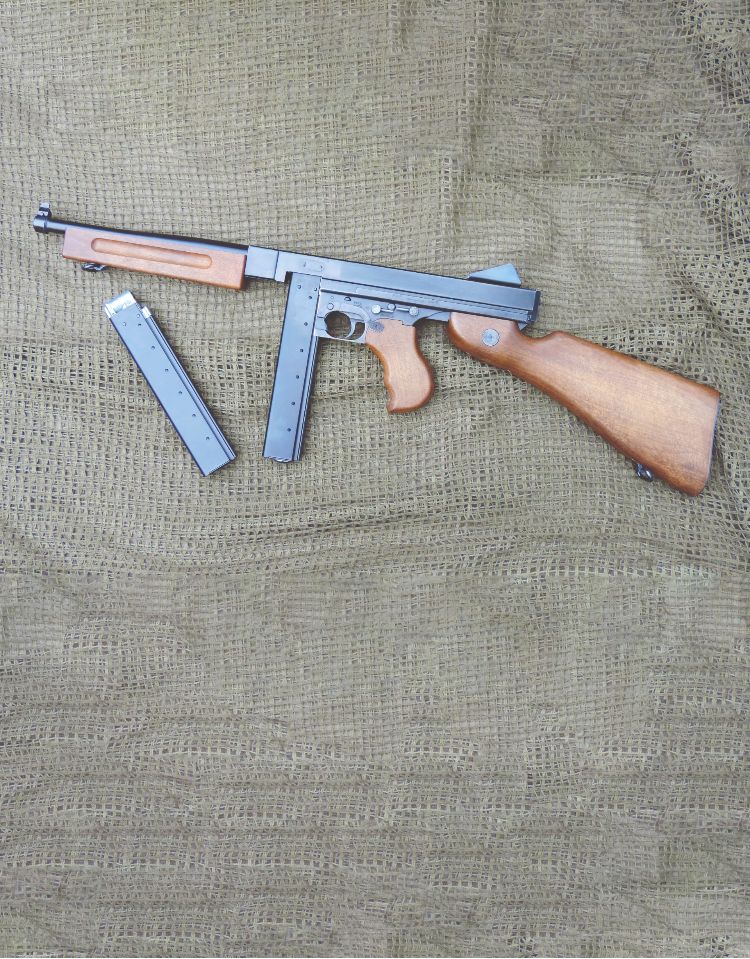 This Umarex M1A1 begs to be picked up and used
This Umarex M1A1 begs to be picked up and used
Sales were very slow, though and it was only due to mass orders from France and Britain in 1939 that the Tommy gun continued to be made. A cheaper model with fewer frills was produced during WW2 and it is this version, the M1A1 that Umarex have replicated. The Tommy gun is often termed a ‘first generation SMG’, which essentially means it is made from solid steel and has wooden furniture, just as rifles had a century ago.
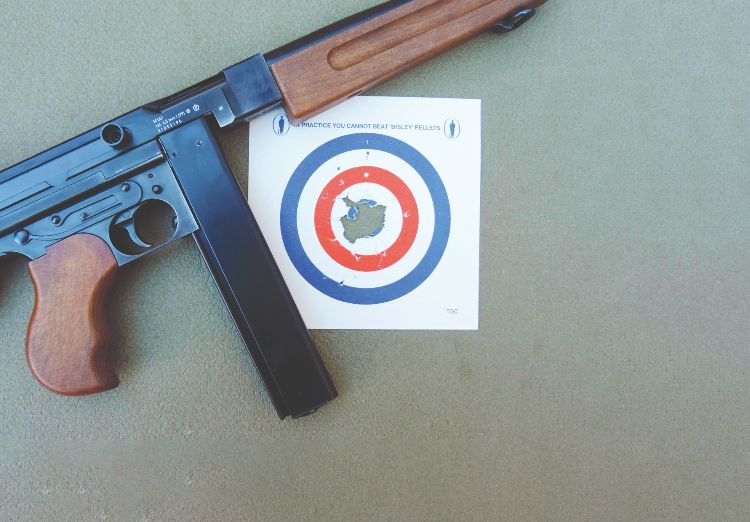 REALISTIC HANDLING
REALISTIC HANDLING
The first thing you notice with the Umarex M1A1 is the weight. At 7½lbs, or 3.4 kilos, it is heavy for its short 31¾in, or 808mm, length. The Umarex is built from metal and realistic faux wood furniture. I’d have preferred a genuine wood option, but the faux wood is convincing and the hollow stock can be padded internally to prevent a hollow sound. A gold-plated version is also available, but I selected the subtle battle-worn finish, which is not over the top and provides a used look to the M1A1.
Controls are replicated from the original and mostly functional. In fact, only the semi- and full-auto fire selector does not move, and as a full-auto option it’s not allowed in the UK. The safety lever functions just as the original, and the magazine release lever on the left side of the action also works like the original. That’s not all, because the M1A1 offers a blow-back action for added realism, along with a reciprocating cocking handle, which must be cocked before you let loose with a loaded magazine. Usefully, the M1A1 also has a last round hold-open, which stops it from functioning after the last round has been fired, thereby preventing gas from being wasted.
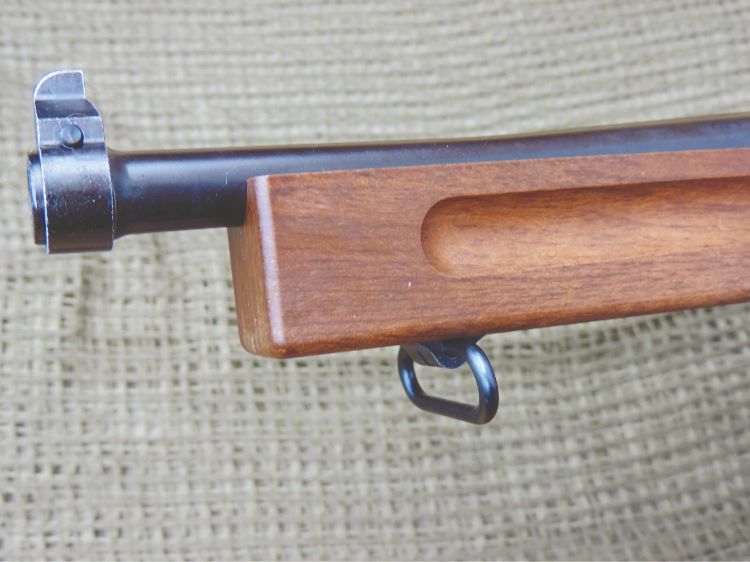 Tell me you know that’s not real wood! Solid sling swivels are fitted as standard, too.
Tell me you know that’s not real wood! Solid sling swivels are fitted as standard, too.
OUTSTANDING MAGAZINE
Two CO2 cartridges power the M1A1 and these are housed within the stick magazine, which alone weighs in at 1lb 3oz, or 537gms unloaded. The first cartridge goes in neck up, and the second neck down, before the base screw is tightened to pierce them both and charge the internal gas chamber. You need to be careful not to screw in the base screw too deep because the synthetic seal can be damaged if it comes into contact with the screw threads for the base cap. It is possible to place a 5p coin between the two cartridges, which ought to prevent seal damage. It is also possible to load one used and one new cartridge if a short session is anticipated.
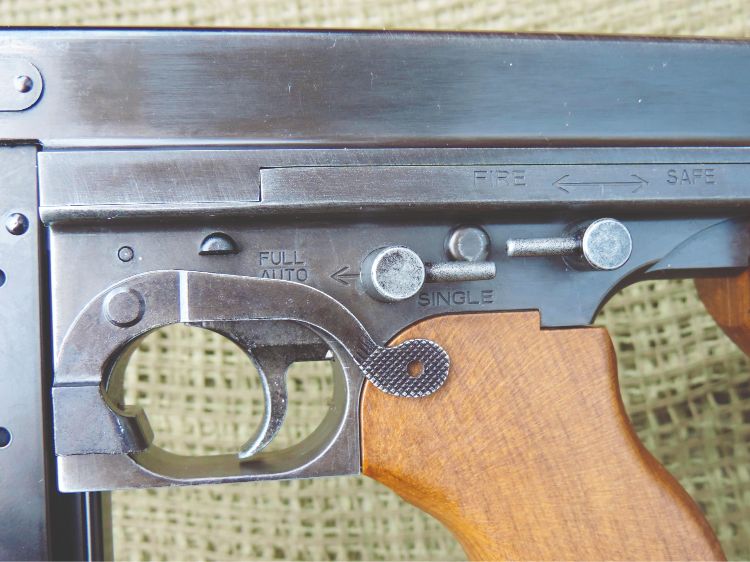 Controls and markings are replicated from the original. Sadly, there is no full-auto facility for the UK market due to our laws.
Controls and markings are replicated from the original. Sadly, there is no full-auto facility for the UK market due to our laws.
The Tommy gun was often associated with a drum magazine, but this was impractical for military use because it was prone to damage, and rattled, so a 30-round stick magazine is the most commonly encountered magazine with original Thompsons and it’s the one that Umarex have replicated. Luke from the Umarex Boys Club told me the M1A1 they used on a display day fed Excites all day, and I experienced the same with the model I bought for testing.
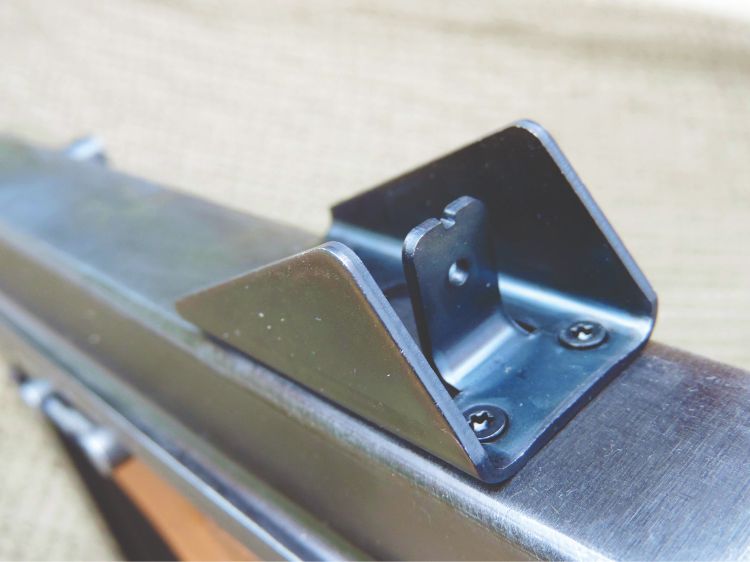 The aperture rear sight is perfect for me, but the notch less so, due to my aging eyes.
The aperture rear sight is perfect for me, but the notch less so, due to my aging eyes.
OFF TO THE RANGE
The sights are fixed and consist of a broad blade up front, and aperture rear sight with a ‘U’ notch for longer distances. Shots initially landed low and slightly left when I aimed under the target, so switching to an aim directly at the target and a tad right resulted in the central placement of most of my shots. Any shots outside of the centre were either down to pilot error or depleting gas. I was able to discharge three magazines of 30 shots each before the gas in the single cartridge I had loaded ran out, which is plenty for a fun session – I don’t generally like to leave a magazine charged with gas between range sessions.
All in all, I was delighted with the M1A1, an incredibly realistic replica that is accurate enough for some fun plinking at distances up to 15 yards. It ticks two vital boxes for me; a visually accurate display piece, and one that is capable of good accuracy downrange. What’s not to like?